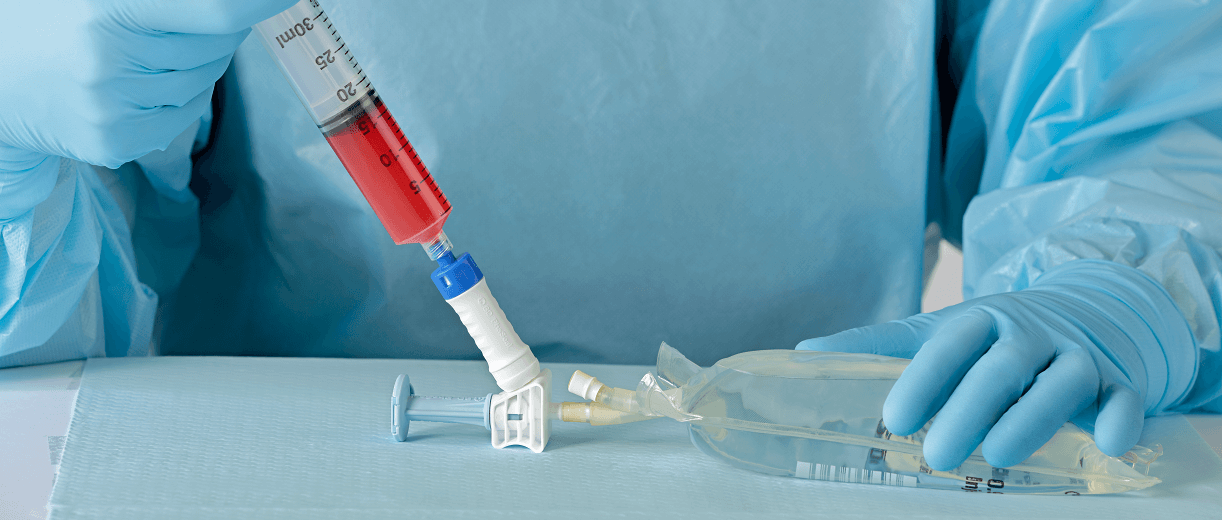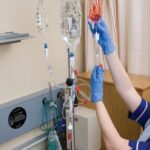How can you protect yourself from the potential hazardous effects of nononcological drugs?
The toxicity of oncological drugs and their potential impact on healthcare worker safety (HCWS) is well known. But what about nononcological drugs? There are few studies on this topic in scientific literature.
However, nononcological drugs may present an occupational hazard for those preparing and administering them1. Pharmacists and nurses can expose themselves to hazardous drugs through several routes. These include: inhalation, contact, absorption through the skin, ingestion or injection2. Skin contact with exposed surfaces is the main route of exposure2.
Opportunities exist for practices that may help prevent exposure to these drugs. The European Biosafety Network (EBN) carried out a 2019 survey of directors of pharmacy and outpatient unit managers5. The purpose of the survey was to collect data on the protection of HCWs preparing and administering hazardous drugs in the European Union3.
European Union takes action against hazardous drugs
What is being done at the European level to protect HCWs from these risks? After lobbying by the “Stop Cancer at Work” campaign4, negotiators from the European Parliament and European Council informally agreed on 16 December 2021 to include hazardous medicinal products (HMPs) in the fourth update to the Carcinogens and Mutagens at Work Directive (CMD4)5.
They also decided to rename it the Carcinogens, Mutagens and Reprotoxic substances Directive (CMRD)5. This agreement also includes measures to train and protect HCWs who work with these substances.
Country focus: hazardous nononcological drugs in Italy
The situation in Italy raises questions on how this issue is handled. For example, closed-system drug transfer devices (CSTDs) are used to access multi-dose vials in only 29% of Italian hospitals3. In another example, regular surface contamination monitoring is only performed in 23% of hospital wards in Italy3.
What is being done to protect Italian HCWs from the risk of exposure to hazardous nononcological drugs? In 2021, the Italian Society of Hospital Pharmacists (SIFO) published a consensus paper on managing the risks associated with handling these kinds of drugs6.
The consensus paper is called Hazardous Drugs and Occupational Risk: The unknown siblings of antineoplastic drugs. It specifically focuses on hazardous nononcological drugs, such as immunomodulatory drugs, antimicrobials and hormone treatments6.
Italian law requires that employers perform risk assessments on workers’ exposure to physical agents, implement measures to protect them and train them on these measures7. For HCWs, these protection measures include closed-system drug transfer devices (CSTDs)8. The United States Pharmacopeia (USP) specifically recommends the use of CSTDs when preparing and administering hazardous drugs in general8.
If you would like to learn more about the hazardous properties of nononcological drugs, feel free to download the consensus paper below.
References
- Connor TH, MacKenzie BA, DeBord DG, Trout DB, O’Callaghan JP. NIOSH List of Antineoplastic and Other Hazardous Drugs in Healthcare Settings. U.S. Department of Health and Human Services, Centers for Disease Control and Prevention, National Institute for Occupational Safety and Health, DHHS (NIOSH); 2016.
- Power LA, Coyne JW. ASHP Guidelines on Handling Hazardous Drugs. Am J Health Syst Pharm. 2018;75(24):1996-2031.
- United States Pharmacopeia Convention. USP <800> Hazardous drugs—handling in healthcare settings. In: Second Supplement to United States Pharmacopeia and National Formulary (USP USP 42—NF 37). United States Pharmacopeia Convention; 2019.
- Sanchez P. European Parliament approves legislation to stop cancer at work. European Public Service Union. 27 April 2021. Accessed on 17 December 2021, at https://www.epsu.org/article/european-parliament-approves-legislation-stop-cancer-work-0.
- De Boer I. Political deal on protecting workers from hazardous substances. European Parliament. 16 December 2021. Accessed on 17 December 2021, at https://www.europarl.europa.eu/news/en/press-room/20211208IPR19046/political-deal-on-protecting-workers-from-hazardous-substances.
- Faggiano I. Farmaci pericolosi, da SIFO un vademecum per gli operatori sanitari. Sanità informazione. 26 July 2021. Accessed on 21 January 2022, at https://www.sanitainformazione.it/salute/farmaci-pericolosi-da-sifo-un-vademecum-per-gli-operatori-sanitari/
- Legislative Decree no. 81. Italian Parliament. Published 9 April 2008. Accessed on 17 January 2021, at http://www.cip.srl/documenti/Testo%20Unico%20Salute%20e%20Sicurezza%20sul%20lavoro%20-%20D.lgs.%2081-2008.pdf
- European Biosafety Network. Observatory on current biosafety practice in European Oncology. 2019
BD-52238




